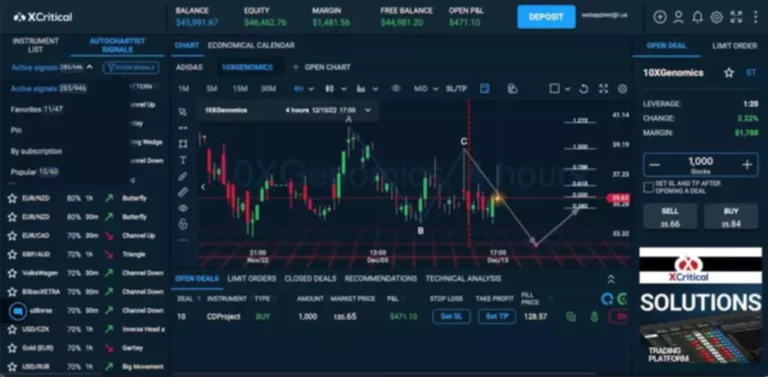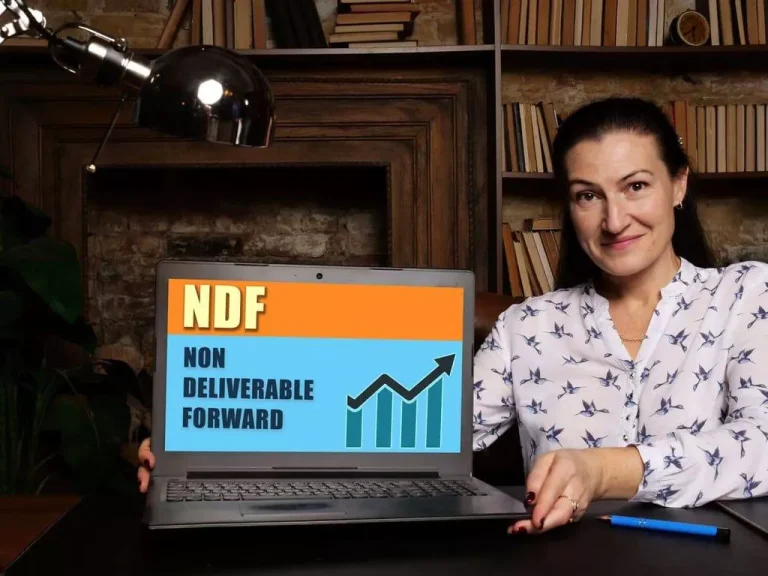Understanding ETF liquidity Manulife Investment Management
Content
The Site is not directed to any person in any jurisdiction where the publication or availability of the Site is prohibited, by reason of that person’s nationality, residence or otherwise. The whole or any part of this work may not be reproduced, copied or transmitted or any of its contents disclosed to third parties without SSGA’s express written consent. Passive management and the creation/redemption process can help minimize capital gains distributions. Primary Market The market where Authorized Participants (APs) create and redeem ETF shares in-kind, typically in blocks of 50,000 shares, which are known as Decentralized finance creation units. Short sellers pay a fee to the lender so that they can borrow ETF shares to sell in the market and then buy them back later at a lower price to lock in a profit before returning them to the lender. In exchange for ETF shares, the short seller provides collateral, typically required to be higher in value than the borrowed shares.
Important information regarding investment risks
The Fund is actively managed and is thus subject to management risk. The Adviser will apply its investment techniques and strategies in making investment decisions for the Fund, but there is no guarantee that its techniques will produce the intended results. The Fund faces numerous market trading risks, including the potential lack of unlock superior liquidity with etfs an active market for Fund shares, losses from trading in secondary markets, and periods of high volatility and disruption in the creation/redemption process of the Fund. The net asset value of the Fund will fluctuate based on changes in the value of the U.S. equity securities held by the Fund. An ETF (Exchange Traded Fund) is an investment fund that holds assets such as stocks, bonds, or commodities.
How in kind redemptions help boost liquidity
Investors must conduct their own analysis and make their own decisions concerning which securities to buy or sell and when to buy or sell them. The opinions expressed are those of Manulife Investment Management https://www.xcritical.com/ as of the date of this publication, and are subject to change based on market and other conditions. Manulife Investment Management disclaims any responsibility to update such information.
Why Low Volume Should Not Stop You from Investing in a New ETF
This support helps to enhance liquidity, reducing bid-ask spreads and thereby lowering the transaction cost of implementation to the investor. An investor who buys shares in a pool of different individual stocks has more flexibility than one who buys the same group of stocks in an ETF. One way that this disadvantages the ETF investor is in their ability to control tax-loss harvesting.
ETFs with Wider Bid-Ask Spreads are Less Liquid
And it’s the vehicle’s unique creation and redemption process that gives it the depth of liquidity to dynamically respond to investor supply and demand. The traditional way of understanding ETF liquidity would be understanding the average daily volume of trading on exchange. It is conventional wisdom that trading on exchange leads to tighter bid offer spreads when compared to trading in the primary markets. For example, a trading cost of 17bps on exchange versus 80bps on the primary market. The role of arbitrage is the last critical component in understanding ETF liquidity and is the bridge that links together #1 and #2.
Therefore, look to get quotes and volume stats from sites with more robust data sets such as quotemedia.com. A quote which shows an ETF’s trading volume on all the stock exchanges is called a consolidated quote. But the key point is that both primary market and secondary market liquidity play a role in providing a full picture of ETF liquidity. The products and services described on this web site are intended to be made available only to persons in the United States or as otherwise qualified and permissible under local law. Nothing on this web site shall be considered a solicitation to buy or an offer to sell a security to any person in any jurisdiction where such offer, solicitation, purchase or sale would be unlawful under the securities laws of such jurisdiction.

A common misconception is that low AuM and low volume ETFs are illiquid. The unique multiple layers of liquidity, including an effective continuous primary market mean ETFs are a lot more liquid than their onscreen volumes suggest. The second is for buyers and sellers to interact directly with market makers, who act as a counterparty or broker to match you with a buyer or seller. This is an important part of secondary market liquidity because the market makers hold large inventories of ETFs. Second, the number of buyers and sellers helps increase trading volume and hence liquidity.
Likely not, given the stock trades on average seven times that amount daily. Thus, it is important for investors to understand that buying 3 million shares of IJR is not much different than buying 10 thousand shares of the least liquid stock within IJR. Traditional mutual fund shares are purchased directly from the fund company. ETF shares are purchased on an exchange, just like buying or selling a stock. Each ETF has a different liquidity profile, and it starts from how quickly and easily the underlying basket can be bought and sold. It is important from an investor’s perspective that when choosing an ETF, the ETF issuer has a wide range of LPs and APs with different skill sets and backgrounds for the investment vehicle to operate as efficiently as possible.
- Financial professionals can help investors reduce the risk in their portfolios and maximize their potential returns through diversifying their investments.
- Therefore, it is vital to be aware of the fund’s focus and what types of investments it includes.
- Important Risk Information There can be no assurance that a liquid market will be maintained for ETF shares.
- As a global investment manager and fiduciary to our clients, our purpose at BlackRock is to help everyone experience financial well-being.
- APs are typically large financial institutions with contractual agreements set in place with the ETF issuer allowing them to facilitate the process of creating and redeeming ETF shares.
- ETFs are generally at least as liquid as the basket of securities they hold.
These are usually institutional investors who trade in large amounts creating liquidity for other investors. This phenomena has become reliable as a function of trade reporting since increasing transparency of costs and improving record-keeping of transactions are among MiFID II’s key regulations. Unless otherwise stated, all information and opinions contained in this publication were produced by Advisors Asset Management, Inc. (AAM) and other sources believed by AAM to be accurate and reliable. This is all made possible by the ETF creation/redemption process in conjunction with the liquidity of the underlying holdings within these ETFs. In addition to possible tax benefits, the creation and redemption of shares via in-kind transactions helps ensure that the value of an ETF’s shares generally moves in connection with the value of its underlying holdings. To understand ETF liquidity, it’s necessary to understand the distinction between primary and secondary markets.
Broker-dealers, advisers, and other intermediaries must determine whether their clients are eligible for investment in the products discussed herein. Vanguard Mexico may recommend products of The Vanguard Group Inc. and its affiliates, and such affiliates and their clients may maintain positions in the securities recommended by Vanguard Mexico. Get Vanguard news, insights, and timely analysis on the market, delivered straight to your inbox. For example, Yones said, “we anticipate that actively managed ETFs and access to new investment styles within an ETF wrapper will continue to remain growth areas over the next decade.

Remember that the AP is typically a large financial institution with the ability to buy and sell ETF shares and the different underlying securities themselves. If they can buy the ETF at $49.90 and hedge that trade by selling short the underlying basket at $50.00 they will net a $0.10 profit. The AP’s position would then be long ETF shares and short the basket of securities. The AP could then redeem the ETF shares to the sponsor for the basket of underlying securities, netting out their short position and making a profit. In theory, APs would do this trade until the price of the ETF and the NAV move back in line.
Due to the creation and redemption process, ETFs have different layers of liquidity that allow investors to trade ETFs in amounts that can far exceed an ETF’s ADV without significantly affecting the ETF’s price. Many investors think that if an ETF doesn’t trade actively the fund is illiquid and should be avoided. That question might make sense from the perspective of a single stock. The gap between its bid and ask price can be wide if a stock does not frequently trade. But with ETFs, you have two levels of liquidity – that of the ETF and that of the underlying stocks.
In fact, most volume data available to investors online is only showing the tip of the liquidity iceberg. While the shares of ETFs are tradable on secondary markets, they may not readily trade in all market conditions and may trade at significant discounts in periods of market stress. Bid/Ask Spread The difference between the highest price a buyer is willing to pay for an asset and the lowest price the seller will accept to sell.
